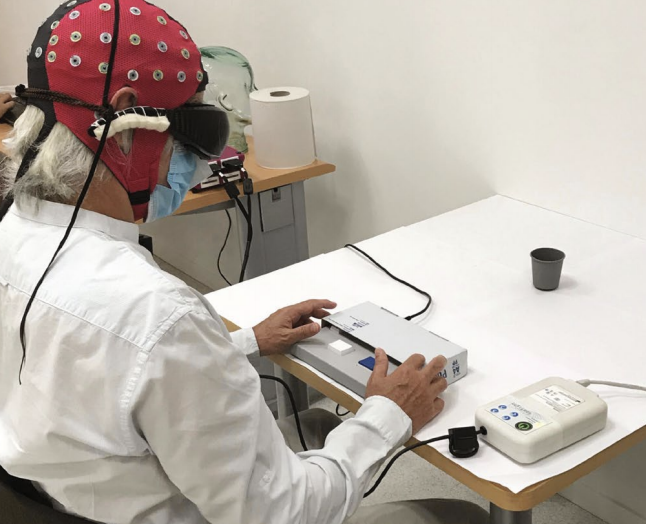High-tech goggles enable blind man to 'locate, count and touch' different objects

"Exciting" technology has enabled a blind man to "locate, count and touch" different objects.
The unnamed 58-year-old has a form of retinitis pigmentosa (RP), a group of inherited conditions that affect the retina. These light-sensitive cells send visual information to the brain, allowing the vital organ to form an image.
The inherited conditions – which affect one in 4,000 people in the UK alone – are caused by mutations in more than 70 genes, with only one form of early-onset RP treatable via gene replacement therapy.
Writing in the journal Nature Medicine, scientists from Sorbonne University in Paris have revealed how the man – who had late-stage RP – was injected with a harmless virus carrying a "light-sensing protein".
Read more: Brain implant enables paralysed man to write by thinking
While wearing "light-stimulating goggles", the man experienced "partial functionary recovery" of his eyesight, in what one expert has called a "significant milestone".

The man, who was diagnosed with RP at 18 years old, was injected with a virus that encoded the light-sensing protein ChrimsonR.
This was administered into his "worse-seeing eye" to target the fovea, a specialised area of the retina that supports "visual acuity".
The man then wore goggles that "capture images from the visual world using a camera that detects changes in intensity, pixel by pixel, as distinct events," wrote the scientists.
"The goggles then transform the events into monochromatic images and project them in real time as local light pulses onto the retina."
Read more: Coronavirus on eye surface of 57% of patients
While wearing the goggles, the man "perceived, located, counted and touched different objects".
He was unable to detect these objects before the injection, with or without the goggles. The goggles alone were also ineffective, highlighting how both steps of the treatment regimen are required.
"This is the first reported case of partial functional recovery in a neurodegenerative disease after optogenetic [controlling nerve cells' activity via light and genetic engineering] therapy," wrote the scientists.
Speaking of the case study, Professor James Bainbridge from University College London said: "This exciting new technology might help people whose eyesight is very severely impaired.
"The intervention appeared to improve the ability to locate an object by sight.
Read more: 'Significant' eye abnormalities in severe coronavirus patients
"It is a high-quality study. It is carefully conducted and controlled.
"The findings are based on laboratory tests in just one individual. Further work will be needed to find out if the technology can be expected to provide useful vision."
Professor Robert MacLaren from the University of Oxford agreed, adding: "This is a significant milestone and undoubtedly further refinements will make optogenetic therapy a viable option for many patients in future."



